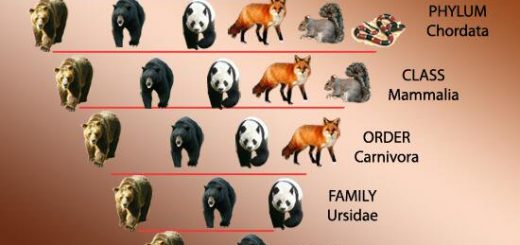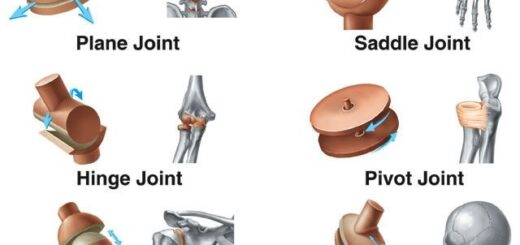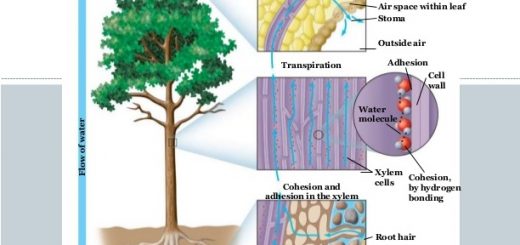Factors affecting the rate of enzyme reaction and Importance of enzyme inhibitors
Enzymes act as catalysts in living organisms, regulating the rate at which chemical reactions proceed without itself being altered in the process. Enzymes can be used to make and improve nearly 400 everyday consumer and commercial products. They are used in food & beverage processing, animal nutrition, textiles, household cleaning, and fuel for cars & energy generation.
Enzymes use
Enzymes are used in paper recycling to remove ink, laundry and dishwashing detergents (to remove grease, starch, and protein stains), they are used in textile processing and fabric finishing (i.e. to remove impurities, to provide a stonewashed effect), they are used in ethanol production to break down the starch and cellulose into fermentable sugars.
Factors affecting the rate of enzyme reaction
On studying the effect of one of the factors on the rate of enzyme activity, the other factors should be fixed. These factors are:
1. Effect of substrate concentration
An increase in the substrate concentration will lead to an increase in enzyme activity until the V max is attained at which the catalytic site of all molecules is completely saturated with the substrate, after that, any further increase in the substrate concentration will not increase the velocity of the reaction.
The first part of the curve is called the 1st order of enzyme activity where an increase in substrate concentration increases the rate of the enzyme till Vmax. The second part of the curve is called zero-order of enzyme activity after the Vmax where there is no further increase in reaction velocity with increased substrate concentration. i.e. The substrate is in excess.
Michaelis constant (Km) is the substrate concentration that produces half-maximal velocity (½ Vmax). Km value is a constant for an enzyme but differs from one enzyme to another. Enzymes with high Km value are of low affinity to the substrate and low activity and vice versa. i.e. The lesser the value of Km the more the affinity of the enzyme for the substrate.
2. Effect of enzyme concentration
The rate of a reaction or velocity (V) is directly proportional to the enzyme concentration when sufficient substrate is present. The velocity of the reaction is increased proportionately with the concentration of enzyme, provided substrate concentration is unlimited.
3. Effect of temperature
At 0° C, the enzyme shows no activity, with the increase of temperature enzymatic activity increases (the rate of the reaction double times with each 10° C increase) till a certain temperature (optimum temperature 37° C – 45° C) where the maximum activity of the enzyme is reached.
Any further increase in temperature above 45° C decreases irreversibly the enzymatic activity due to denaturation of the enzyme. At 65-70° C complete irreversible loss of enzyme activity occurs. Optimum temperature is the temperature at which the enzymatic reaction velocity is maximal and it ranges from 37° C – 45° C for mammalian enzymes.
4. Effect of PH
Optimum pH: Each enzyme has an optimum pH at which appropriate charges are present on both the enzyme and the substrate and the enzyme activity is maximal. Below and above this optimum pH, the enzyme activity is diminished. At the extremes of pH, the enzyme does not act as it is denatured. For every enzyme, there is an optimum pH e.g.
- Salivary amylase 6.8
- Pepsin 2
- Trypsin 8
- Alkaline phosphatase 8.4
5. Effect of Co-enzymes concentration
Co-enzymes concentration has the same effect and gives the same curve of substrate concentration on enzymatic activity, as NAD.
6. Effect of physical agents
- Red and blue lights increase enzyme activity.
- Heating, shaking stirring inhibit enzyme activity by denaturation.
- Ultraviolet rays and infrared rays inhibit enzyme activity.
7. Effect of enzymatic activators
Activators increase the rate of enzyme-catalyzed reactions. The velocity of the reaction depends on activator concentration. Some enzymes are activated by different ways:
- Removal of inhibitory peptide converts inactive forms of the enzyme (zymogen or proenzyme) to the active forms). The inhibitory peptide usually masks the catalytic site. e.g. Pepsinogen → Pepsin + inhibitory peptide
- Some enzymes containing SH groups e.g. glyceraldehyde 3-P dehydrogenase require reducing agents (vitamin C) to be activated.
- Some enzymes require minerals, they are called metal activated enzymes e.g. Cl− for amylases (non-metal ions). Mg++ for kinases.
- Allosteric activators. (Allosteric modifiers) The binding of the allosteric activator produces conformational changes in the protein structure of the enzyme resulting in increased velocity of the reaction e.g. AMP is an allosteric activator of phosphofructokinase enzyme.
- Covalent modification: Many enzymes are activated by phosphorylation and inactivated by dephosphorylation and vice versa. This means that the enzyme is present in two interconvertible forms (phosphorylated and dephosphorylated). The phosphate groups are usually attached to the hydroxyl group of amino acid residues (mainly serine or tyrosine) in the polypeptide chain of the enzyme.
A good example is the activation of glycogen phosphorylase and hormone-sensitive lipase by phosphorylation while the activation of glycogen synthase is by dephosphorylation.
8. Effect of enzymatic inhibitors
Inhibitors are substances that combine with the enzymes competitively or non-competitively leading to the decreased catalytic activity of the enzyme.
Types:
(1) Competitive (substrate analogue inhibition)
- The inhibitor (I) combines with the enzyme (E) at the catalytic site. The chemical structure of the inhibitor closely resembles that of the substrate.
- It combines “reversibly” with the enzyme forming an Enzyme-Inhibitor complex rather than an Enzyme-substrate complex. (there is no E-I-S complex in this type).
- When both the substrate and the inhibitor are present, they compete for the same binding site (catalytic site) on the enzyme surface.
- In this type of inhibition, the Vmax of the enzyme is not decreased, but the apparent Km is increased i.e. the affinity of the enzyme to the substrate is decreased.
- This type of inhibition is reversible and the inhibition is removal by increasing the substrate concentration.
- Example: Malonic acid is similar in structure to succinic acid so, it competes with is at the catalytic site of succinic acid dehydrogenase leading to its inhibition which can be reversed by increasing succinic acid concentration.
(2) Reversible non-competitive inhibition
- The I combines with the enzyme away from the catalytic site.
- The I is not similar to the substrate in structure.
- The I can combine with the free enzyme or with the enzyme-substrate complex-forming El or ES-I complex.
- The I lowers the Vmax of the enzyme but does not affect the Km (as the catalytic site is free for combination with the substrate).
- The I makes the ES-I complex to break down at a slower rate than does the ES complex.
- Example: Lead may inhibit ferrochelatase enzyme leading to anaemia. Reducing agents as vitamin C, vitamin E and glutathione can regain the activity of the enzyme.
(3) Irreversible non-competitive inhibition: (enzyme poison)
- The I combines with the enzyme covalently.
- The I has no relation to the substrate concentration i.e. the inhibitor at any given concentration will depress the enzyme irreversibly.
e.g. lodoacetate reacts with (SH) group of phosphoglyceraldehyde dehydrogenase enzyme.
(4) Allosteric inhibitors: (Allosteric modifiers)
Some enzymes have in addition to the catalytic site which binds the substrate another active site called the allosteric site which binds usually small organic molecules not similar in structure to the substrate causing inhibition of the enzyme. It causes conformational changes in the protein structure that leads to decreased enzyme activity e.g. excess ATP and citrate to inhibit phosphofructokinase (glycolysis), and excess ATP inhibits citrate synthase (CAC).
Feed-back inhibition
In this type of inhibition, the final end products of a group of enzymatic reactions inhibit the first enzyme in this group of reactions by binding to its allosteric site. E1 is inhibited by P4; when the later concentration is high it binds to the E1 allosteric site non covalently (reversibly) and when P4 is decreased E1 becomes active again. such as:
- Glycogen inhibits glycogen synthase.
- Cholesterol inhibits B-hydroxy, B-methyl glutaryl CoA reductase, and thus inhibits cholesterol synthesis.
- Palmitic acid inhibits acetyl CoA- carboylase and thus inhibits fatty acid synthesis.
Importance of enzyme inhibitors
- They are used to study enzyme kinetics.
- They are used to discover various metabolic pathways.
- They are used in the treatment of infections e.g. antibiotics.
- They are used in the treatment of different diseases as antimetabolites and anticoagulants.
9. Effect of product concentration
Increased product concentration decreases the enzyme activity, this may be due to:
- Change in the pH of the medium.
- The product is more or less similar to the substrate, so it may compete with it to the catalytic site of the enzyme.
- The product may bind to the enzyme at the allosteric site (in the case of allosteric enzyme).
10. Effect of time
In all the previous factors, time must be taken into consideration, and its effect on enzyme kinetics must be measured against time. Regulatory enzyme: The enzyme which controls the rate for the entire sequence of the reactions.
Regulation of enzyme activity
Long term-slow (regulating the amount):
- Synthesis.
- Degradation.
Short term- Rapid (regulating the activity):
- Reversible covalent modification.
- Non-covalent allosteric regulation.
Regulation of the amount of the enzyme ( Control of enzyme amount) by controlling its rate of synthesis or rate of degradation.
Enzyme induction and repression
Inducers are substances that stimulate gene expression into protein in the case of enzymes, the inducers maybe hormones. or its substrate. Repressors are substances which inhibit gene expression into proteins. In the case of enzymes, the repressor maybe a product of the enzyme or hormones.
Some enzymes are present in a constant concentration in the cell regardless of the concentration of the substrate and they called constitutive enzymes e.g urea cycle enzymes. Any defect in the genes may lead to defective production of enzymes (either in quantity or quality) leading to what is called inborn errors of metabolism.
Enzymes meaning, function, examples & Mechanism of enzyme action
Isoenzymes structure, Coenzymes function & Classification of enzymes
Protein Classification, Globular & Fibrous protein, Simple, Compound & Derived proteins
Protein structure, Classification, properties of amino acids & Formation of peptide bonds
DNA Repair types, definition & importance, Protein Biosynthesis & Genetic Code













